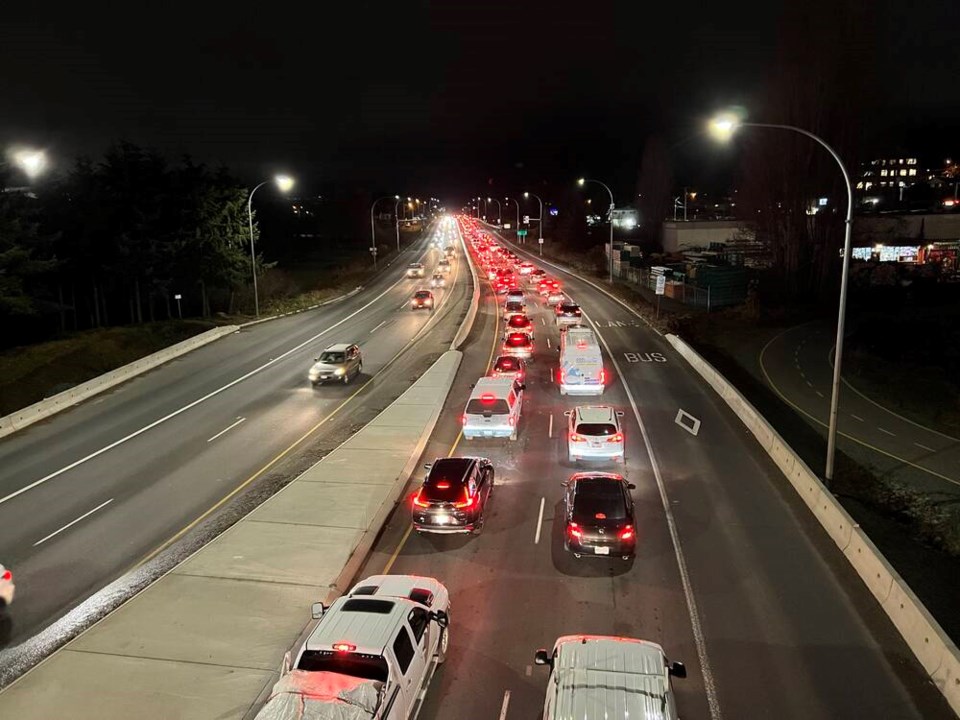Exactly 10 years ago, I spent New Year’s Eve in the VicPD drunk tank.
It was for a story about whether one of the rowdiest nights of the year had, in fact, become tamer.
Who ended up in cells as 2012 came to an end?
There was a tiny wisp of a 19-year-old girl in a tiny wisp of a black dress who was found barfing in a Broad Street parking lot, all alone, abandoned by her friends, defenceless against the near-freezing chill and the 2 a.m. predators.
There was a young man who, while wasted on alcohol and mushrooms, had smashed the window of a downtown business, right in front of the police. He was belligerent at the cop shop, firing a phone across the room instead of calling a lawyer.
Also arrested: a guy who beat another man unconscious in the 900 block of Douglas, a woman who threw up all night after a raucous breakup in a bar, two men booked for domestic assaults — 19 people in all, every one of them hammered. In other words, a pretty quiet New Year’s, relatively speaking. Certainly nothing like the olden days when they used to have to open the courthouse lock-up to house the overflow.
Also unlike the olden days: just one person was busted for drunk driving that night. On Dec. 31, 2012, it appeared impaired motoring wasn’t as prevalent as it had been on earlier New Year’s Eves. Credit a societal shift in attitude, nudged along by the sobering deterrence of B.C.’s new roadside bans.
That came to mind this week when reading a just-released survey that found the number of 91原创s who admit to drinking and driving is on the rise. The Traffic Injury Research Foundation’s annual poll found that 10.5 per cent of respondents said they had, in the past 12 months, driven when they thought they were over the legal limit. “This is the highest level reported in more than two decades, up from 9.7 per cent in 2021,” the Ottawa-based organization said. In fact, the percentage of those who thought they had driven while over the limit has been rising since 2015, with a sharp uptick in the last couple of years.
That finding had the organization worried that 91原创 drunk-driving deaths, which had been trending steadily in the right direction — plunging from 1,079 in 1996 to 447 in 2020 — might take a U-turn. “This rising trend is concerning and suggests the number of alcohol-related fatalities may rise again,” the report concluded.
The survey also found a change in where people were drinking before driving. As you might expect, many of them shifted to doing so at home, often alone, during the early part of the pandemic when the world shut down.
What the study found remarkable was that while the number who drink with close friends pretty much returned to pre-COVID levels in 2022, a significant percentage continued to consume their alcohol in their own homes, as opposed to the bar, restaurant or someone else’s house. Almost 39 per cent of those who drove after drinking reported doing their imbibing at home in 2022, up from 22 per cent in 2017-2019.
“It is essential to tailor key messages to reach this subgroup of 91原创s who are drinking at home and then getting behind the wheel,” the report said.
We could, in fact, probably use an assortment of messages, given the way the pandemic sent people reaching for the bottle (from under the bed). Last December, UVic’s 91原创 Institute for Substance Use Research released a study showing British Columbians drank more during the first year of COVID than in any of the previous 20 years.
The study, based on sales data, estimated our intake from April 1, 2020 to March 31, 2021 worked out to 9.32 litres of pure alcohol for every person aged over 15 in the province, the equivalent of 547 cans of five per cent beer or 104 bottles of 12 per cent wine. 91原创 Islanders were particularly thirsty, swallowing 11.54 litres per person.
That’s worrisome enough on its own but more troubling still when car keys are involved.
Happy New Year, everyone. I don’t plan to spend this one in the lock-up. But then, who does?
>>> To comment on this article, write a letter to the editor: [email protected]



